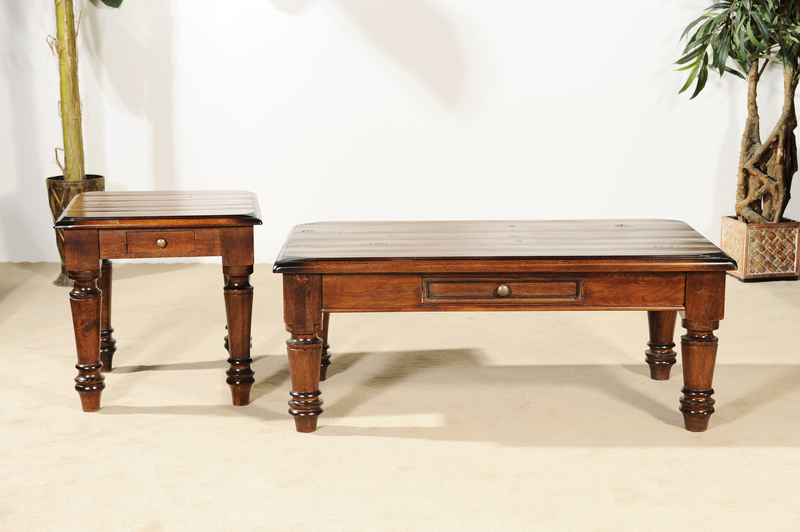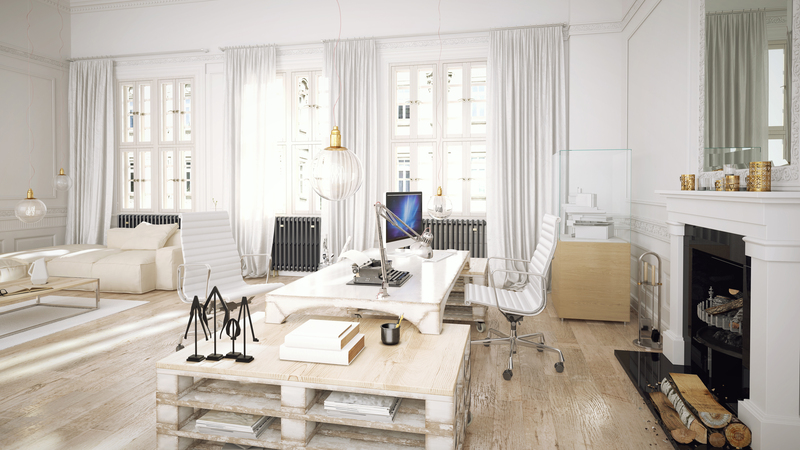Curtail Clutter: Mastering Minimalist Principles
Minimalism has captured the attention of individuals globally, appealing to those seeking a more fulfilled, intentional, and organized life. In a world where clutter overwhelms both our physical spaces and mental states, mastering minimalist principles offers a refreshing approach to reclaiming control. This comprehensive guide will walk you through the process to curtail clutter, transform your surroundings, and embrace a clutter-free lifestyle--creating space not just in your home, but also in your mind.
What Is Minimalism?
At its core, minimalism is about more than just tidy homes or aesthetic decor. It's a conscious philosophy that embraces simplicity, utility, and the intentional possession of items that matter most. Minimalist principles reject the excess and champion value--making sure every object in your life serves a meaningful purpose.
But what does it mean to truly master the art of minimalism? And, more importantly, how can you leverage these ideas to curtail clutter and lead a richer, more focused life?
Minimalism in Today's Cluttered World
The average person owns thousands of possessions, many of which go unused. The rise of consumerism, fast fashion, and tech gadgets tempts us daily with the promise of happiness through acquisition.
- Visual chaos creates stress, anxiety, and even depression.
- Disorganization can waste time, money, and mental energy.
- Most people overestimate the value of keeping things "just in case."
Curtailing clutter isn't just about tossing out junk. It's about intentionally crafting an environment that supports your well-being and aligns with your values.

The Key Principles of Minimalism
Mastering minimalist principles means understanding and implementing several core tenets. These are not rules, but rather guiding philosophies that can be tailored to fit any lifestyle.
1. Intentional Ownership
Owning fewer things--but those you own are meaningful, useful, or joy-inspiring. When you curtail clutter this way, you create a supportive space for your priorities.
- Ask yourself: Does this serve a purpose in my life?
- If an item is unused, unloved, or duplicate, consider letting it go.
2. Quality Over Quantity
Minimalists invest in fewer, higher-quality items that last longer and add more value. This reduces waste and saves money in the long run.
- Choose well-made items that reflect your needs and style.
- Prioritize durability and functionality.
3. Decluttering Regularly
Mastering the art of decluttering means reviewing possessions regularly and removing what no longer serves you or your living space.
- Set up a monthly or seasonal declutter routine.
- Apply the "one-in, one-out" rule to maintain equilibrium.
4. Thoughtful Consumption
Minimalist living encompasses mindful purchasing--avoiding impulse buys and acquiring only what genuinely adds value.
- Make lists before shopping to avoid unnecessary items.
- Be wary of sales or trends that push you to accumulate more.
5. Simple Living
Minimalists cherish life's simple pleasures: time with loved ones, creativity, mindfulness, and experiences over material wealth.
- Focus on hobbies, health, and personal growth.
- Prioritize activities that enrich your life without requiring more "stuff."
The Benefits of Living With Less
Implementing minimalist principles to curtail clutter pays dividends well beyond the visual appeal of a tidy space. Key benefits include:
- Reduced Stress: Cluttered environments are proven to elevate cortisol (the stress hormone). Minimalism fosters calm.
- Enhanced Focus: Fewer distractions clear the way for productivity and creativity.
- Time Savings: Less cleaning, organizing, and searching means more time for things you love.
- Financial Freedom: Mindful consumption leads to smarter spending and savings.
- Environmental Impact: Buying less and choosing quality minimizes waste and supports sustainability.
- Improved Well-being: A serene, clutter-free home boosts mental clarity and contentment.
How to Master Minimalist Principles and Curtail Clutter
Transitioning to a minimalist lifestyle is a journey, not a one-time event. Here's a step-by-step process to get you started and keep you on track:
1. Evaluate Your "Why"
Understanding your motives is crucial. Do you seek more peace, less stress, or time for passions? Write down your reasons to stay motivated.
2. Start Small
Avoid overwhelm by picking one area at a time--a drawer, a closet, or a counter. Minimalist habits are forged in small, consistent actions.
3. Sort and Categorize
Divide items into:
- Keep: Useful, loved, or necessary
- Donate/Sell: In good condition, but no longer needed
- Recycle/Dispose: Unusable, expired, or broken
4. Ask the Right Questions
- Do I use this regularly?
- Would I buy this again today?
- Does it enhance my life?
If the answer is no, it's a candidate to let go.
5. Organize With Intention
- Give every item a designated place.
- Store things logically and accessibly.
- Keep surfaces clear for a calm, open aesthetic.
6. Maintain Regularly
- Schedule monthly or seasonal declutters.
- Adopt the "one-in, one-out" rule for new acquisitions.
Minimalism Room by Room: Curtailing Clutter Across Your Home
Minimalist Living Room
- Limit furniture to essentials for relaxation and gatherings.
- Showcase a few meaningful decor items, such as artwork or photos.
- Keep surfaces like coffee and side tables clear.
Decluttered Kitchens
- Store only frequently used gadgets on counters.
- Group similar items together for efficient access.
- Let go of duplicates--do you really need five spatulas?
Streamlined Bedrooms
- Limit decorative items and furniture.
- Store clothing you actually wear; donate or sell the rest.
- Adopt minimalist bedding for a calm, restful environment.
Minimalist Bathrooms
- Keep only daily essentials on the counter.
- Dispose of expired cosmetics or products.
- Use organizers--drawers, trays, or baskets--for orderliness.
Organized Workspaces
- Keep desks uncluttered; store supplies in designated spaces.
- Adopt digital organization to reduce paper clutter.
- Display only inspirational or functional items.
Decluttering Beyond Possessions: Digital Minimalism and Mental Clarity
Minimalism isn't confined to physical spaces. In the digital age, digital clutter is just as taxing. Emails, files, social media, and notifications all clog mental space. Mastering minimalist principles here means:
- Regularly cleaning out your email inbox and unsubscribing from spam.
- Organizing files into clearly labeled folders.
- Limiting social media time and unfollowing accounts that don't inspire or inform you.
- Turning off non-essential notifications to reclaim focus.
Similarly, mental minimalism--reducing commitments and obligations--frees up emotional bandwidth. This allows you to pursue deeper relationships, creative endeavors, and personal fulfillment.
Common Minimalism Myths Debunked
To truly curtail clutter and harness the power of mastering minimalist principles, it's essential to dispel a few persistent myths:
- Myth: Minimalism is about depriving yourself.
Truth: Minimalists focus on abundance in what matters, and letting go of distractions. - Myth: Minimalist homes are always white and bare.
Truth: Minimalism is about function and purpose, not color schemes or aesthetics alone. - Myth: You must count or limit possessions.
Truth: Minimalism is unique to each individual. There's no universal number of items to own.
Sustainable Minimalism: The Environmental Advantage
Another compelling reason to embrace minimalist living: environmental stewardship. The "buy less, choose well, make it last" approach benefits both your home and the planet by:
- Minimizing waste through reduced buying and longer-lasting possessions.
- Fostering mindful consumption that avoids cheap, disposable goods.
- Encouraging donations and recycling, which support circular economies.
Minimalist Habits for Everyday Life
Once you've implemented minimalist principles, maintaining the benefits relies on consistent habit building:
- Question new purchases: Do I genuinely need this?
- Schedule regular check-ins to review clutter.
- Prioritize quality over quantity with each buying decision.
- Celebrate experiences instead of accumulating possessions.
- Practice gratitude for what you have, which lessens the urge to acquire more.

How to Stay Motivated on Your Minimalist Journey
Adopting a minimalist lifestyle sometimes invites challenges--sentimental items, societal pressures, or decision fatigue. Staying motivated can be easier by:
- Setting clear goals for what you want minimalism to achieve in your life.
- Documenting your progress through before-and-after photos.
- Joining minimalist communities online or locally for encouragement.
- Focusing on the benefits you notice--less stress, more energy, greater time.
Conclusion: Begin Your Journey to a Clutter-Free Life
Curtailing clutter through mastering minimalist principles isn't about perfection; it's about creating lasting, meaningful change. Every step taken to reduce clutter is a step closer to a more harmonious, empowered, and joyful existence. Whether you're starting with a single drawer or decluttering your digital life, remember to go at your own pace, celebrate your progress, and always return to your "why."
Embrace minimalism as a path to greater clarity, simplicity, and happiness. The freedom, peace, and energy you reclaim will be well worth the journey.
Ready to Start?
- Pick one area to declutter this week.
- Set a reminder to revisit your space regularly.
- Share your journey and inspire others to join the minimalist movement.
Mastering minimalist principles transforms not only your environment but your overall quality of life--curtailing clutter, building calm, and opening up a world of new possibilities.